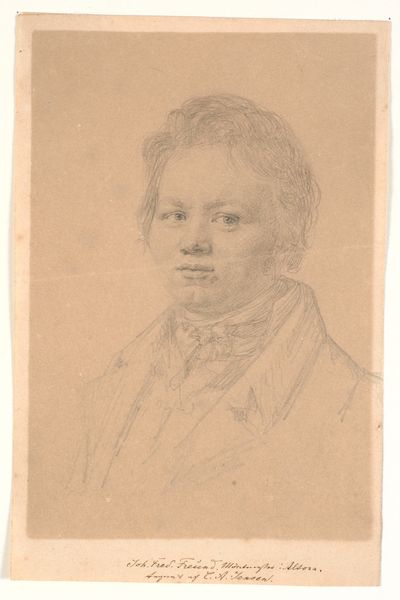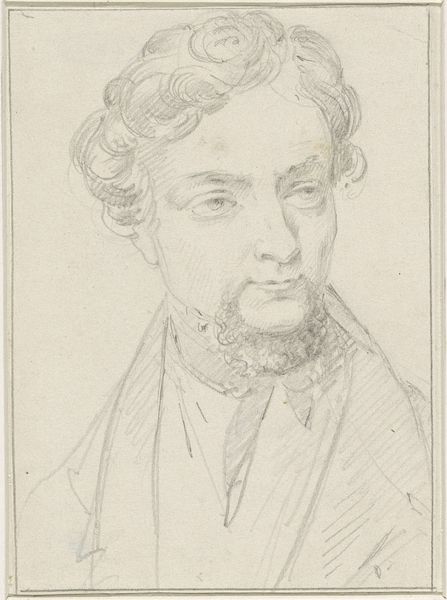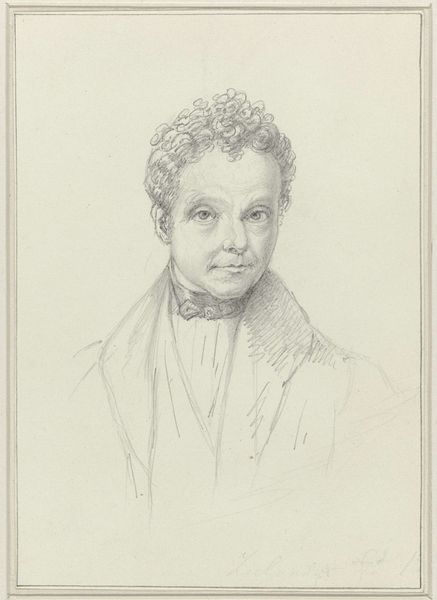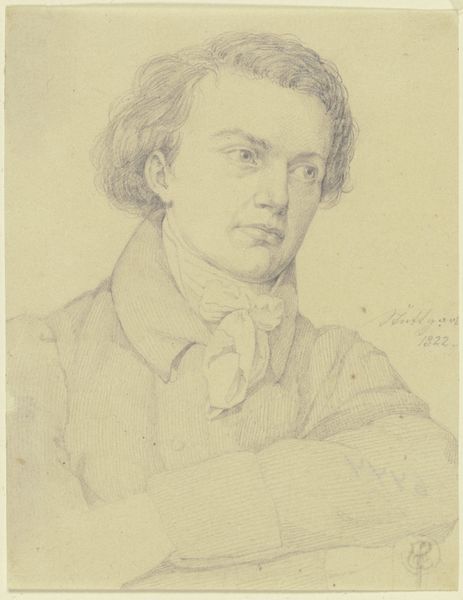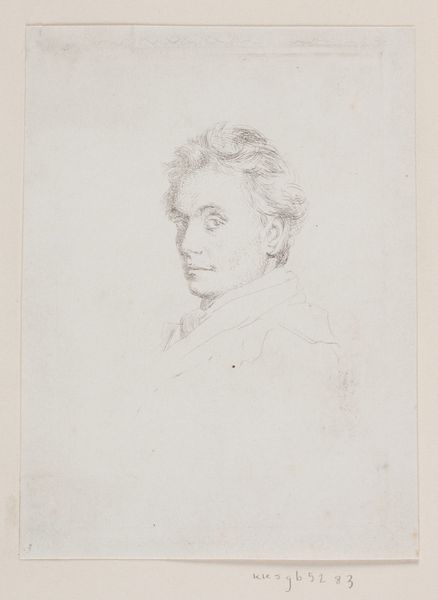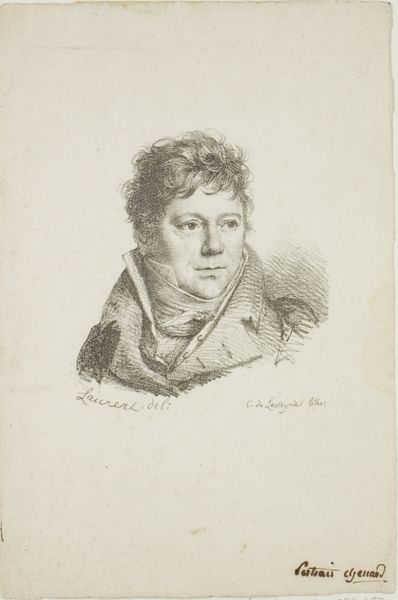
drawing, paper, pencil
#
portrait
#
pencil drawn
#
drawing
#
facial expression drawing
#
16_19th-century
#
pencil sketch
#
paper
#
portrait reference
#
german
#
pencil drawing
#
romanticism
#
pencil
#
yellow element
#
animal drawing portrait
#
portrait drawing
#
pencil work
#
history-painting
#
fine art portrait
Copyright: Public Domain
Curator: Before us, we have "Bildnis des Stuttgarter Hofschauspielers Friedrich Mevius," a pencil drawing from 1821 by Nikolaus Hoff, housed here at the Städel Museum. Editor: My immediate reaction is one of tranquility. The soft pencil strokes create a gentle, almost ethereal portrait. There's a stillness in his gaze and an undeniable sense of calm. Curator: It is an excellent example of Romantic-era portraiture. Consider how the artist utilizes line to create form and evoke emotion. The subject's features are softly rendered, capturing his likeness without sharp, harsh lines. Editor: Right, the focus on gentle modeling rather than rigid outline contributes so much to its sensitive depiction. Also note the light source, how it defines form so effortlessly in monochrome, while also seemingly softening the contours. Was portraiture common for theatrical actors during this time, suggesting a higher societal role? Curator: Portraiture of actors during the early 19th century signaled their increasing cultural prominence. Friedrich Mevius held an important position at the Stuttgart court, and this drawing reflects not just his individual features, but his status and profession. The very act of creating this image suggests his integration into the upper echelons of society. Editor: Fascinating. The composition, however, keeps it grounded. It feels deliberately intimate. There is the attention to fabric folds in his attire contrasting with wisps of hair in rendering. This creates an intriguing visual dynamic through the formal elements alone. Curator: Absolutely. Hoff's drawing displays Romanticism’s focus on individualized experience and expression, but his technique firmly roots the portrait within broader artistic conventions of the era, from composition to the attention to material detail. It captures a fleeting likeness. Editor: Looking at this work has illuminated new angles for me—both historical and aesthetic, particularly regarding performance and representation through something as simple as a pencil on paper. Curator: Indeed, it's remarkable how much insight into a person and an era a simple pencil drawing can offer. The quiet intensity speaks volumes.
Comments
No comments
Be the first to comment and join the conversation on the ultimate creative platform.
